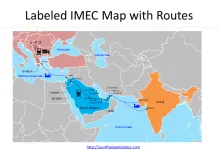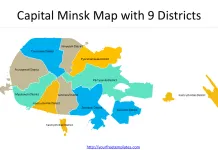The Blockchain technology template in PowerPoint format includes four slides. Firstly we have the slide describing Blockchain networks comparison. Secondly the PowerPoint template is for Blockchain illustration with icons. Thirdly there are five key forces of Block chain technology. Finally let’s have a look at Block chain technology transaction process in PowerPoint templates. As the same series, you can also find our Data Mining, Machine Learning, cloud computing and Artificial Intelligence PowerPoint templates.
The Blockchain technology PowerPoint templates include four slides. Check detailed conception of Blockchain in Wikipedia.
Slide 1, Blockchain technology PowerPoint templates for three networks comparison.
Blockchain technology, an innovative form of distributed ledger technology, is making waves around the globe for its potential to revolutionize various sectors. When we compare the three types of blockchain networks – public, private, and consortium blockchains – we find distinct differences in their functionality and applicability.
Public blockchain networks, such as Bitcoin and Ethereum, are open to anyone and are fully decentralized. They offer transparency, ensuring that all transactions are visible to every participant in the network. However, this open nature can also lead to slower transaction times and higher energy consumption.
On the other hand, private blockchains are restricted to specific organizations or groups. This allows for faster transaction times and lower energy consumption compared to public blockchains. Private blockchains, such as Hyperledger Fabric, maintain confidentiality but compromise on decentralization.
Lastly, consortium blockchains stand somewhere in between public and private networks. They are semi-decentralized and regulated by a group of organizations rather than a single one. They offer a balance of speed, security, and transparency.
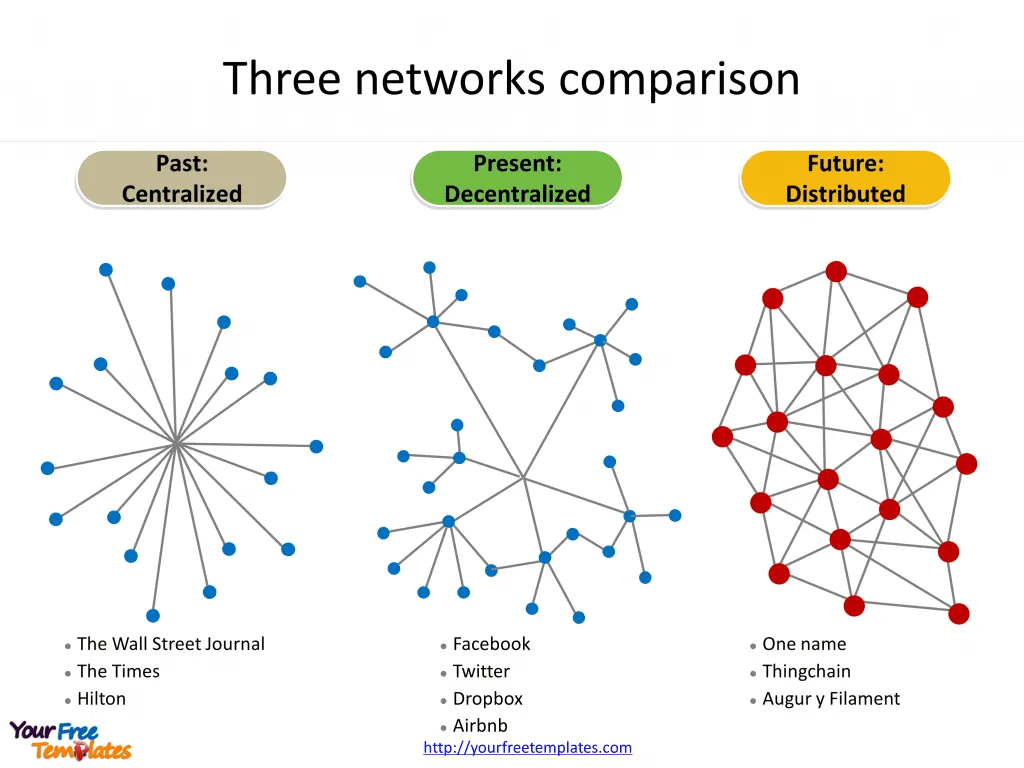
In conclusion, each type of blockchain network has its own advantages and disadvantages. The choice between these three depends on the specific needs of the organizations or individuals using the blockchain technology. It’s crucial to understand these differences to make informed decisions about which blockchain technology to adopt.
Slide 2, Block chain technology illustration
Blockchain technology is a revolutionary innovation that has redefined the way we conduct online transactions. It is a decentralized, peer-to-peer network that provides a platform for users to make secure, transparent, and tamper-proof transactions. This groundbreaking technology operates on a consensus algorithm, ensuring that each transaction is validated by multiple nodes in the network before it is recorded on a block.
The integrity of blockchain technology lies in its design that makes it resistant to data modification. Once information is recorded in a block, it becomes virtually impossible to alter it retroactively without the consensus of the network. This makes the technology incredibly secure and trustworthy. Moreover, the peer-to-peer network structure eliminates the need for a central authority or intermediary, fostering a sense of trust and cooperation among users.
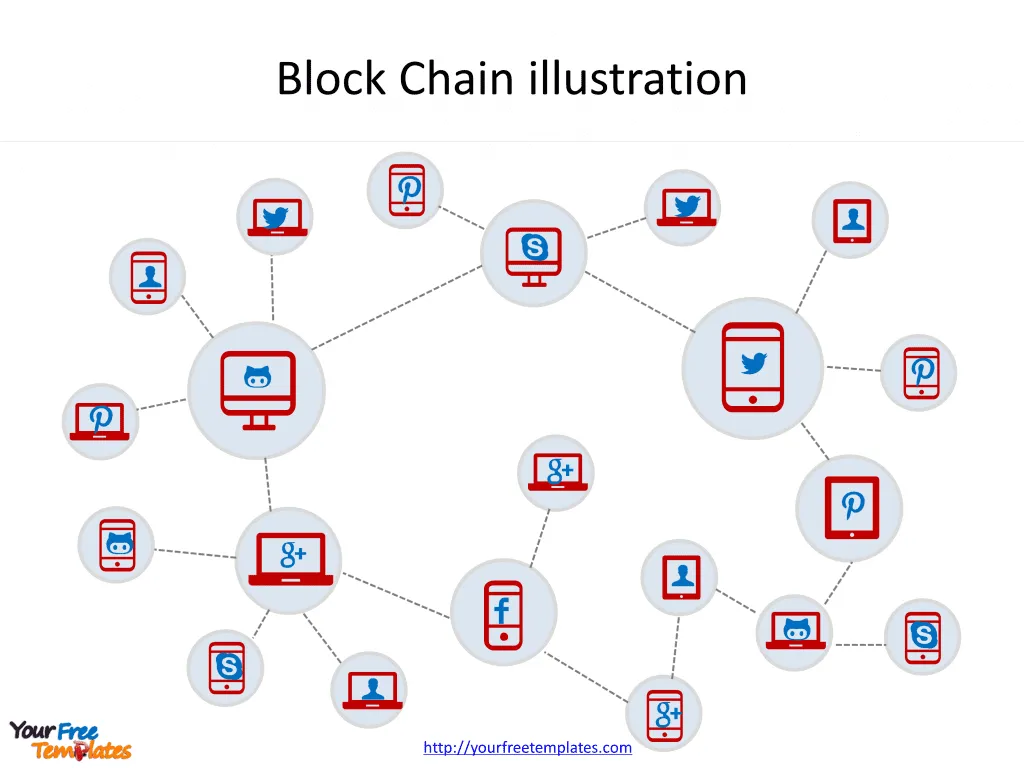
Overall, blockchain technology offers immense potential for various sectors including finance, healthcare, and logistics among others. It promises to revolutionize our digital world by making online transactions more secure, transparent, and efficient. While blockchain technology is still in its nascent stages, its potential implications for transforming digital transactions are immense. As we continue to explore and understand this technology, we can expect to see more innovative applications that will redefine our approach to digital communication and commerce.
Slide 3, Five key forces of Block chain technology
Blockchain technology is an advanced and innovative technology that has been revolutionizing various sectors of the global economy. There are five key forces that define the power of this technology.
Firstly, decentralization is the core attribute of blockchain technology. Unlike traditional systems where one central authority holds power, blockchain operates on a network of nodes where each node has equal authority. Secondly, transparency is another significant force behind this technology. Every transaction made on the blockchain is visible to everyone on the network, thereby preventing fraudulent activities.
The third force is security. Blockchain technology uses advanced cryptographic techniques to ensure secure transactions. Each block in the chain contains a unique cryptographic hash, making it nearly impossible to alter any information once added to the blockchain. Fourthly, blockchain offers immutability. Once data is added to the blockchain, it becomes permanent and cannot be changed, providing a reliable and tamper-proof record.
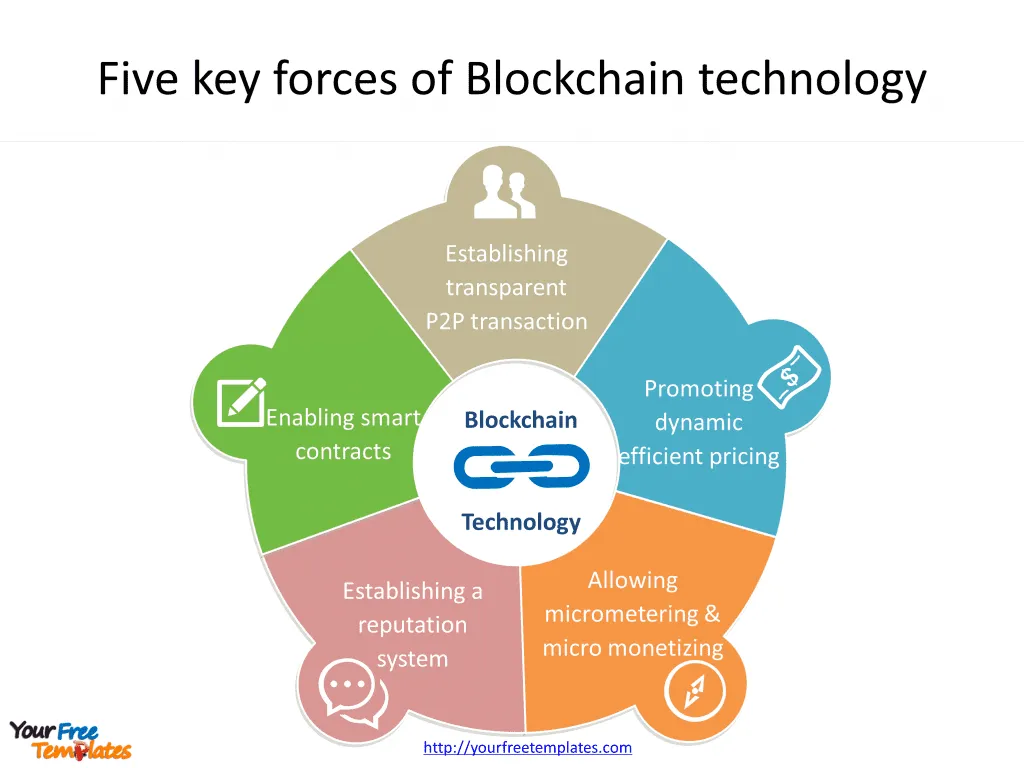
Lastly, peer-to-peer interaction is a fundamental aspect of blockchain technology. It eliminates the need for intermediaries such as banks or brokers, making transactions faster, cheaper, and more efficient. This force has immense potential to disrupt traditional business models across various sectors.
In conclusion, the combination of decentralization, transparency, security, immutability and peer-to-peer interaction makes blockchain technology a powerful tool for transforming various industries. The disruptive potential of these five key forces offers significant opportunities for innovation and growth.
Slide 4, Let’s have a look at Block chain technology in PowerPoint templates
The completion of a transaction using blockchain technology involves six integral steps. The first step is transaction initiation, where the sender initiates the transaction by specifying the receiver’s address and the amount to be transferred. Once the transaction is initiated, it is then broadcasted to the network.
In the second step, the transaction is validated. Every node in the blockchain network validates the transaction independently. The validation process involves checking whether the sender has enough balance to transfer the specified amount and if the receiver’s address is correct.
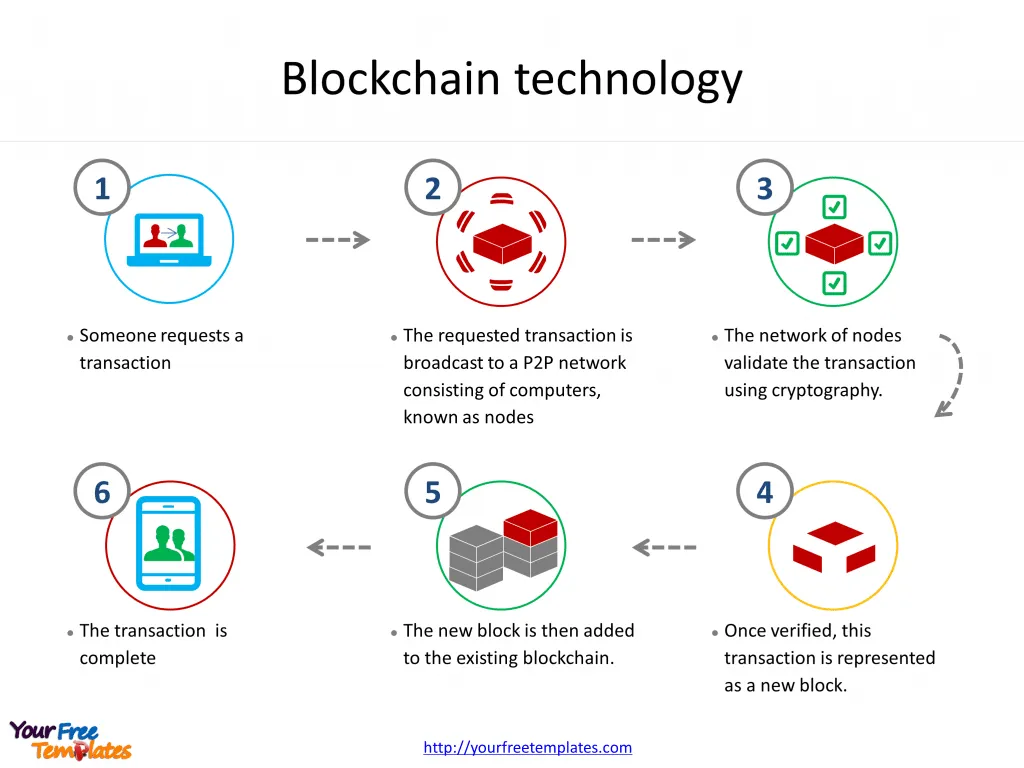
Blockchain technology process
The third step is transaction pooling. After validation, all transactions are pooled together into a memory pool, commonly known as ‘mempool’. Each node in the network maintains its own mempool that contains all validated but unconfirmed transactions.
In the fourth step, mining or forging happens. Miners or forgers select transactions from their mempool, verify them once again, and then include them in a new block. This new block also contains a reference to the previous block in the form of a hash.
In the fifth step, the new block is added to the blockchain. Once a miner or forger successfully mines or forges a block, it is added to the blockchain and broadcasted to all nodes in the network.
The final step is transaction confirmation. Once a block is added to the blockchain, all transactions within that block are considered confirmed. This confirmation process ensures the immutability and security of transactions made via blockchain technology.
Size:152K
Type: PPTX
[sociallocker]Aspect Ratio: Standard 4:3
Click the blue button to download it.
Download the 4:3 Template
Aspect Ratio: Widescreen 16:9
Click the green button to download it.
Download the 16:9 Template[/sociallocker]








